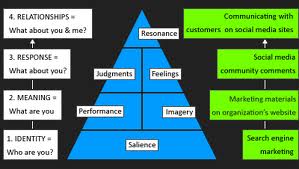Blue Collar Meaning- Frequently Asked Questions- In Depth
Content

In an organization, there are hundreds of people working in the organization, which can be distinguished by the color of the dress worn by them. The color of the uniform specifies the job performed by the workers in the organization. Blue collar jobs are the jobs whereby the person performing the job does manual blue collar vs white collar salary labor and gets an hourly or daily wage, based on the performance of their work. Blue-collar jobs can sometimes pay better than white-collar jobs. For example, blue-collar jobs in the construction or manufacturing industries may pay higher wages than white-collar jobs in the retail or customer service industries.
Managers and executives in white collar professionals role can have an extremely high earning potential depending on where they work. Most white-collar jobs traditionally require a higher level of traditional education than blue-collar jobs. White-collar workers often pursued bachelor’s degrees as part of their training, especially in fields like medicine or law. Blue-collar workers, by comparison, may only need on-the-job training or to attend a trade school to develop their skills. Not everyone wants to work in a stuffy office for 8 to 9 hours out of the day. Luckily, you don’t have to work a white collar job to get great pay, in fact, there are quite a few blue collar jobs that pay very good salaries.
Nature of Job
The no-collar worker is a freelancer—perhaps a writer, musician, or sculptor— who lives outside the usual structure of the workforce and most people’s workday schedules. They may be members of a union that ensures the stability of their working hours and future employment opportunities. Please note that salaries can vary depending on location, experience, and company. These figures are intended to provide a general idea of the earning potential for these careers. Workers are frequently classified into blue-collar and white-collar categories according to the color of their collars. If you’re looking for a job that offers a great work/life balance, plenty of opportunity for growth, and good pay, then a white-collar job may be right for you.

The white-collar worker, on the other hand, may have acquired his job through a more strict hiring procedure and, for this reason, is more difficult to dismiss. The position a white collar worker holds may be stable since white collar work carries specific skills. Most white-collar employees earn an annual salary instead of an hourly wage and can have some degree of job security.
What’s the Difference Between Blue- and White-Collar Jobs?
You can learn more about the standards we follow in producing accurate, unbiased content in oureditorial policy. One of the newest types of collar colors is the green collar, which refers to jobs in the environmental sector. Other key distinctions between the two include differing educational backgrounds and social classes among others.

However, it’s important to be aware of these pros and cons so you can make an informed decision about which career path is right for you. If you are looking to make a lot of money, blue-collar work may be the better choice for you. The Primus Workforce team is proudly built on hands-on industry knowledge and experience. Usama ChaudryUsama is a professional engineer and graduated from the University of Alberta. Computations of electrical and thermal characteristics are among his research interests.
Examples of Jobs
Most often, blue-collar workers have to work for a specific duration, like 6 or 8 hours, starting from early morning. On the other hand, white-collar employees have to work around the clock and sometimes, be available 24/7 because the corporate industry never sleeps. As the differences between blue-collar and white-collar workers narrow due to economic conditions and competition, how workers decide to pursue a career may change. Instead of focusing on markers like compensation, these workers may consider the work environment and job duties more critical. Workers are often divided into categories using different classifications.
- On the other hand, white-collar work tends to be more analytical and mentally taxing.
- Skilled blue-collar workers can typically find jobs that use their skill set without extra training.
- Increased creativity – white-collar workers have the opportunity to be creative in their daily jobs.
- As blue-collar job technology increases, so does the amount of education needed and subsequent pay workers receive, such as those for electricians and cable installers.
- White-collar workers were named as such because of the white shirts they wore under their suits.
It’s a sweeping designation that covers senators, congressional aides, librarians, accountants, and other jobs. The only requirement is that the position is with the government. Here’s a list of all those colors and what they mean, including white-collar vs blue-collar jobs. Blue collar workers wear blue attire so that dirt and dust are not shown.
Social Classes
They are generally located within an office environment and do little in the way on manual labor. This type of collar is generally paid at or above the average national wage and conducts relatively skilled work. Most jobs will require some kind of Bachelors degree and some level of experience or training. • White collar jobs are considered higher paying, and workers get salaries and perks; whereas, blue collared workers receive daily or monthly wages. However, this distinction between blue collared and white collared workers is getting blurred with many jobs requiring high manual skills, and receiving high pay. The persons who perform blue collar jobs are known as workers while the persons who perform white collar jobs are known as employees.
The average job salaries for mid-career prison guards range around $60,880, 3 percent higher than the typical salary of $58,876 for a mid-career college professor. Blue-collar labor traditionally refers to workers who do hard manual labor. It harkens back to the blue-collared shirts many of these employees wore, often as uniforms. Blue-collar work includes manufacturing, agriculture, construction, mining and maintenance.
Types of Jobs
Doctors location will range from working in a hospital to a smaller local surgery. There are a number of different types of doctors, such as primary care, pediatricians, dermatologists, and urologists. An attorney, otherwise known as a lawyer in some parts of the world, practices law.
- Most civil engineers work for government organizations or private companies.
- The coronavirus pandemic has brought another layer of connotation to the term white-collar worker.
- If your application meets the eligibility criteria, the lender will contact you with regard to your application.
- Different types of classifications are frequently used to group workers into distinct categories.
To check rates and terms Stilt may be able offer you a soft credit inquiry that will be made. However, if you choose to accept a Stilt loan offer, a hard inquiry from one or more of the consumer reporting agencies will be required. Stilt provides loans to international students and working professionals in the U.S. (F-1, OPT, H-1B, O-1, L-1, TN visa holders) at rates lower than any other lender.
What is a red collar worker?
Red collar workers are perhaps the easiest collar group to define: they're government workers of all types. The “red collar” moniker actually derives from previous government labor compensation methods. Government workers used to receive their pay from what was known as the red ink budget—and the nickname stuck.
